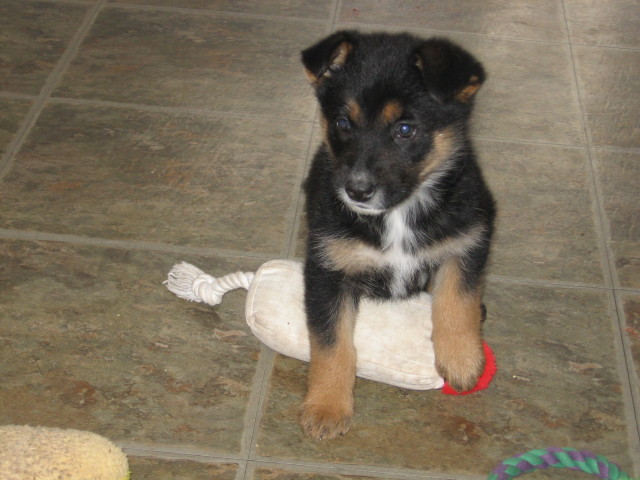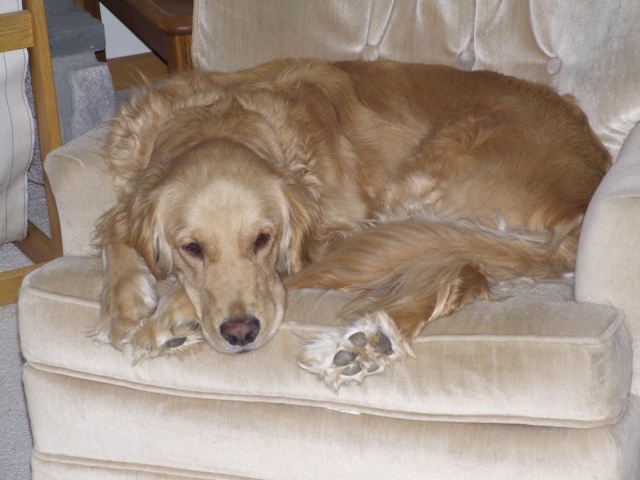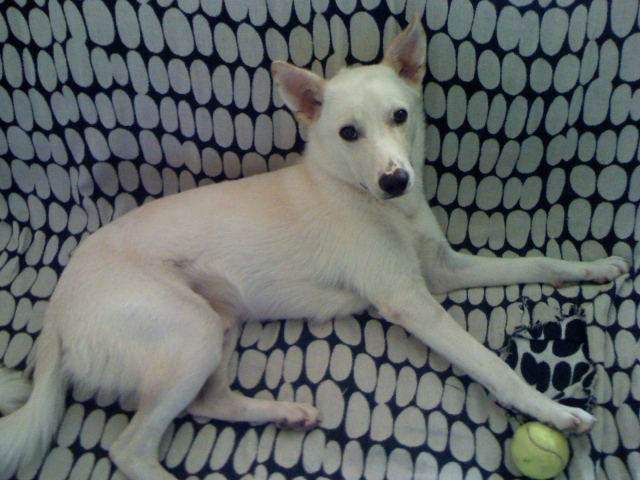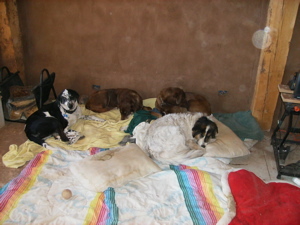QuestionWe have had our Schnauzer (not neutered) for a little over a year. He is the best dog ever. Well, two weeks ago we took in a puppy from a family member who couldn't keep her (a wiener dog, she is spaded). Since we have brought her into our home, the Schnauzer has not been behaving as normal. I give him attention before I give her attention. He is now urinating in the house and on people, getting in the trash, barking at anything and everything. He'll play with the puppy for a bit and then he'll go into his own corner. He just lays around and looks at everyone and seems to not want to have any interaction with me. Is this a phase he is going through until he gets use to having the new puppy around? Is there something I can do change his behavior. It saddens me to see that my little baby, who was so full of energy is just "moping" around. How can I help him adapt to this change?
AnswerYou must neuter your Schnauzer (wait until he is more secure, give him a few weeks, as this is not a quick fix but will benefit him in the long run.) Because the female puppy is spayed does not mean he is unaware that she's female. His marking behavior is most likely provoked by hormones; however, some degree of it may be strictly a reaction to the other dog's presence. Essentially, his apparent withdrawal and marking may be his fevered attempt to secure his place in your "pack". What you're seeing (his moping around) appears to be confusion regarding this pack placement, and is a normal reaction. Pay as much attention to this dog as you have in the past, but do NOT reward his "sulking", withdrawal, or any behavior you do not want to see continue. Introduce positive reinforcement training with him (separately from the puppy) for several short intervals a day until he has obtained one solid behavior ("sit" but use a unique word), and then, for a couple of weeks only, ask him to "sit" for you before interacting with him for any reason. This will solidify your "top of the heap" position, engage his cognitive abilities, enhance his problem solving skills (yes, dogs DO problem solve) and make him far more secure. It will take you approximately two weeks to obtain a solid response to that command, during which time you will be petting him first, feeding him first, letting him in/out first, and spending quality time with him ALONE (indoors and out). His behavior is a demonstration of his high anxiety and confusion. Do not reward this in any way (do not pay more attention to him as a result of any of his negative behaviors, even attempting to correct them.) If he is over barking, distract him by making an unexpected sound WITHOUT addressing him directly (bang a pot with a wooden spoon.) If he is marking the house, put a belly band on him (available on the internet) but be certain to reinforce his appropriate elimination with reward and praise. Don't attempt to cajole him out of his "corner" because you are feeling guilty or anxious about his behavior, this is a reward. Instead, initiate a short positive reinforcement training event: use these interludes to your benefit (and his, in the long run.) You can learn about positive reinforcement training by reading Karen Pryor's web site, John Fisher, Patricia McConnell Ph.D.and Jean Donaldson. How you manage this difficult interval (difficult for both dogs, by the way) will determine how secure they both become.

 Is this aggression, dominance, or play?
QuestionQUESTION: I have a question regarding doggy beh
Is this aggression, dominance, or play?
QuestionQUESTION: I have a question regarding doggy beh
 puppy problems
QuestionQUESTION: I am the proud owner of 2 german shep
puppy problems
QuestionQUESTION: I am the proud owner of 2 german shep
 aggression in aging dog
Question
Niko
I have a thirteen year old, female, Samoy
aggression in aging dog
Question
Niko
I have a thirteen year old, female, Samoy
 Dog walking problems
Question
Snickers
I have been trying to train my dog SN
Dog walking problems
Question
Snickers
I have been trying to train my dog SN
 Sudden aggression within pack after a death
Question
Sudden aggression in o
We have an approximatel
Sudden aggression within pack after a death
Question
Sudden aggression in o
We have an approximatel